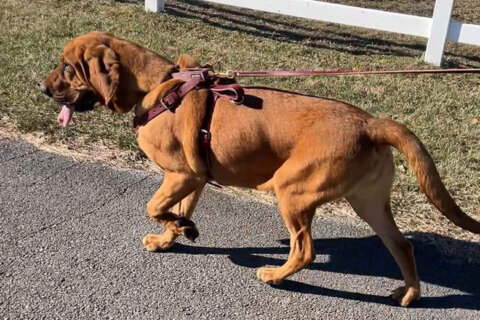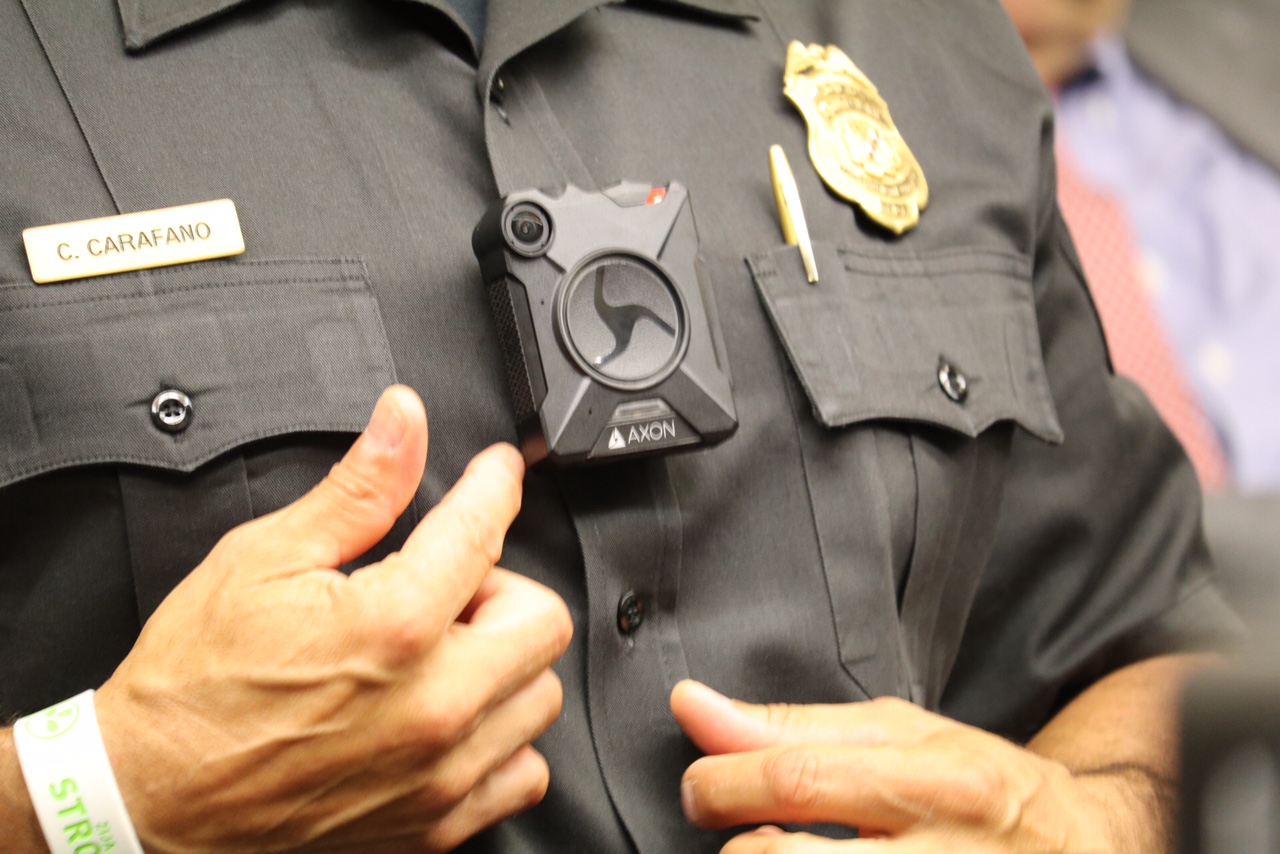

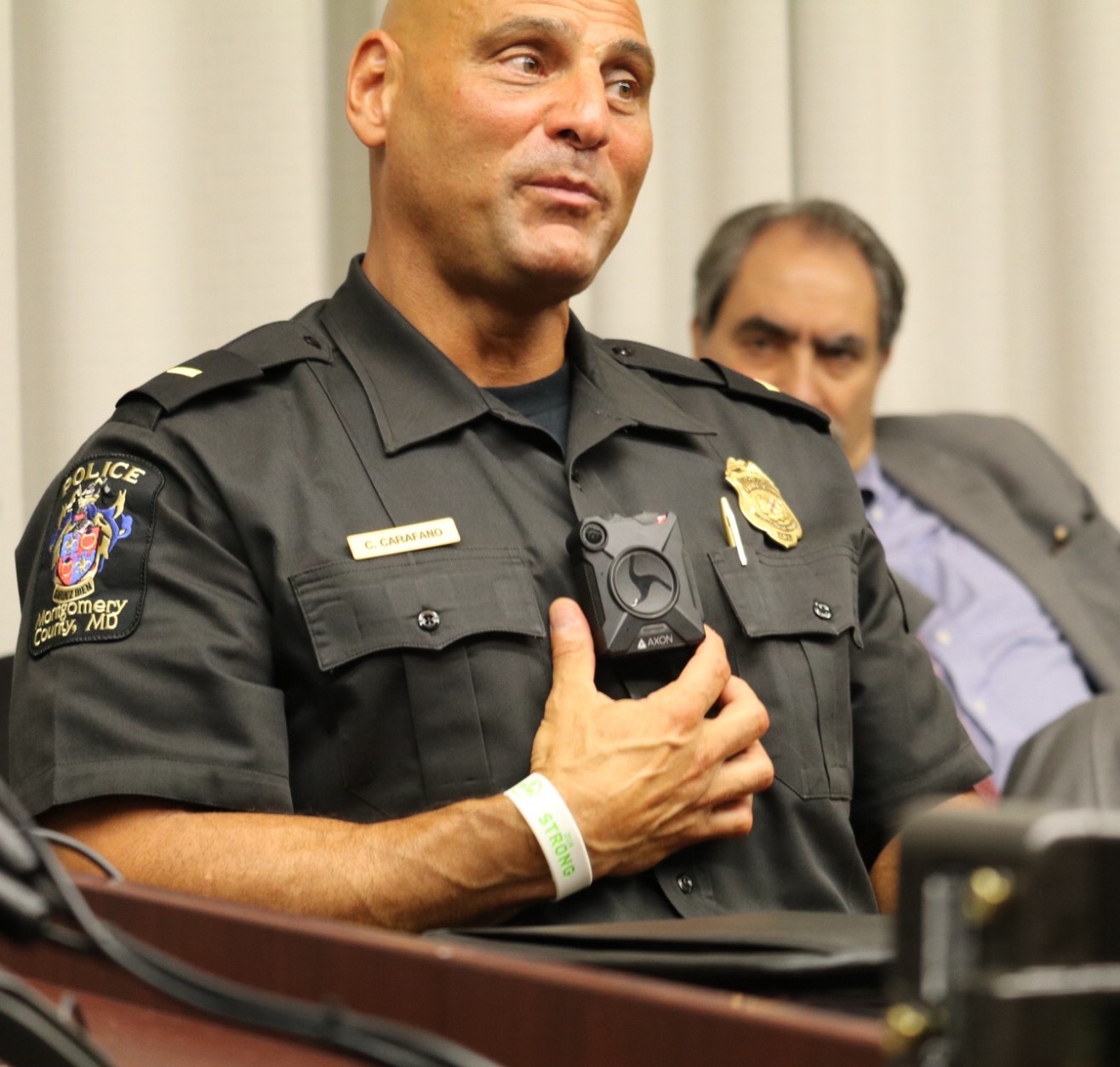
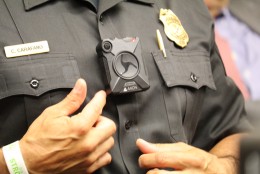
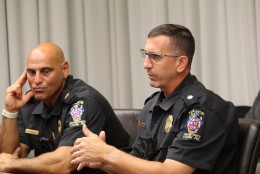
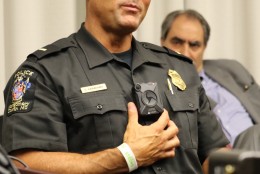
WASHINGTON — When and how Montgomery County police activate the body-worn cameras issued to 900 sworn officers has been a matter of concern to some county residents, according to Montgomery County Council member Marc Elrich.
As police briefed the Montgomery County Council’s Public Safety Committee on the body-worn camera program, Elrich asked Assistant Police Chief Luther Reynolds and Lt. Chuck Carafano under what circumstances police turn on the cameras that are becoming standard issue for officers.
Elrich said residents have relayed to him that when confronted with police, they are often asked how they are doing, followed by questions about where they are going. In Monday’s briefing, Elrich told Reynolds and Carafano in a casual encounter on the street, “You actually have no business asking me where I’m going. And the moment you ask me that question, the camera needs to go on.”
Carafano agreed with Elrich that if an officer is quizzing a person on their movements, the discussion is no longer one of idle chatter.
“Based on your scenario, that sounds investigatory in nature to me, if I’m asking you where you’re going,” and in that case, Carafano, said the cameras should be turned on.
Elrich explained that those concerns came from African Americans who said they believe that their communities are often singled out for selective enforcement. Elrich said that if police could simply opt out of recording their interactions, an accurate picture of how the laws are enforced from one community to another would be impossible to get.
But police also outlined — as specified in Montgomery County Police Department policy — times when officers would use their discretion as to when to turn on a camera. Under the current policy, cameras are not turned on in areas such as locker rooms, during strip searches or when a witness indicates that they are unwilling to talk unless a camera is turned off.
New police culture with body cams
Reynolds told the council committee that not every officer is a fan of the body-worn cameras, but that acceptance, and even enthusiasm of the use of the devices has jumped up from the initial wariness.
In the early months of the pilot program when fewer than 90 police officers were wearing the cameras, a survey of sworn officers showed that 80 percent reported the cameras were not well received by their co-workers. Now that 900 sworn officers are using the cameras, the perception has shifted, according to Reynolds.
Carafano told the council’s public safety committee that many officers embrace the use of the devices since they add the officer’s perspective of events versus whatever a citizen may record on a cellphone.
Also, Carafano said that in some cases, the use of the cameras helped bolster a court case. He told the committee that when a particular type of search is described, judges displayed skepticism.
“I’ve literally been in courtrooms where judges would say ‘I don’t believe someone would consent to that,” Carafano said. “Well, now, we show the video and you can see that individuals are consenting to the search.”
There was also the unusual case of a DUI suspect in custody. Carafano says the suspect, a woman, was in custody in an elevator with an officer when she suddenly lowered her shirt. Carafano says the woman told the officer, “‘how she’s going to complain that she was sexually assaulted by the police officer.” In that case, Carafano said, the officer responded that the incident was caught on his body-worn camera—and that the tape refuted the woman’s account.
Carafano says while nationally, the videotaped images of police and citizen interactions have generated a great deal of debate, anger and frustration on both sides of the issue, he’s optimistic that the use of body-worn cameras will create an atmosphere of constructive dialogue.
He recounted an interaction during a flight out of London when a teenager told him she would not want to visit the United States. He asked her why and she told him, “because it’s dangerous there: the police are killing people.”
Carafano called the interaction heart-wrenching for him, insisting that the videos from the police officer’s perspective could change police-public relations.
“Now we have an opportunity to show the real perspective: the story from the beginning to the end,” he said.




